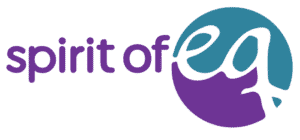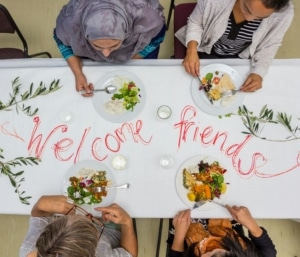First Comes Justice, A call to action!
First Comes Justice: A Call to Action
I heard this call last week and it has been haunting me. Do you know what the definition of Justice is? In today’s world Justice embodies fairness, equality, and accountability, ensuring that every individual is treated with dignity, regardless of their background. It goes beyond law enforcement to actively pursue social equity, addressing systemic targeting that marginalize certain people groups. In our rapidly changing global landscape, justice demands a commitment to human rights and the protection of the vulnerable. It calls for us as a collective society to challenge injustices that we see and create systems that empower all members of society. Ultimately, for all of us, justice fosters a world where everyone has the opportunity to live freely and access the resources they need to succeed.
To continue this thread, thinking about a world teetering on the edge of chaos and dis-order, the concept of justice stands as a beacon of hope and a call to action. Justice is not merely a legal term or a distant ideal; it is the very foundation upon which a compassionate society is built. It is the force that holds back the darkness, offering light to those who have been cast into the shadows. But who offers this justice? Who visits the poor and the sick? And more importantly, who are we as a society—those who love and act, or those who turn away, saying, “Not my problem”?
Justice is often personified by those who dedicate their lives to serving others. These are the individuals and organizations that step into the breach, filling the gaps left by systemic failures. They are the social workers, the healthcare providers, the educators, and the countless volunteers who work tirelessly to uplift the marginalized and the oppressed. They are the ones who visit the poor, offering not just material aid but also dignity and respect. They are the ones who visit the sick, providing care and comfort in times of need. And for me and a few others that I know, visiting the incarcerated in prisons across the country with a program called “Kairos“. Can I tell you a secret? There were times that I did not want to go through that gate, I was tired, I was sure that I was not making a difference, I knew there so many more people then me that could do it better. But, if not me, who?
These guardians of justice do not act out of obligation but out of a deep-seated belief in the inherent worth of every individual. They understand that justice is not a zero-sum game but a collective endeavor that benefits all. By lifting others, they lift society as a whole.
Injustice thrives in the shadows, feeding on ignorance and apathy. It is the darkness that creeps into the corners of our communities, whispering that some lives are worth less than others. But justice, when wielded with compassion and courage, holds back this darkness. It shines a light on inequality and demands accountability. It challenges the status quo and insists on change. I like to tell people when doing spiritual direction that those of us that are called to work with the least, the last and the lost are linking arms and holding back darkness while shining light in the darkest of dark corners of our society.
Justice is not passive; it is active and dynamic. It requires us to confront our uncomfortable truths and to take action, even when it is inconvenient or difficult. It calls us to be allies and advocates, to use our voices and our resources to support those who have been silenced and marginalized.
The measure of a society is how it treats its most vulnerable members. The poor and the sick are often the first to be forgotten, left to fend for themselves in a world that values wealth and health above all else. But justice demands that we do better. It calls us to visit the poor, to understand their struggles and to work towards solutions that address the root causes of poverty. And yes, the poor will always be with us. It calls us to visit the sick, to provide care and compassion, and to advocate for a healthcare system that is accessible and equitable for all.
Visiting the poor and the sick is not just an act of charity; it is an act of justice. It is a recognition of our shared humanity and a commitment to building a society that values every life.
In a world where the gaps in our social fabric are widening, we are called to be fillers of the breach. This is not a task for the faint of heart, and you may not be a person called to do this, but it is a task that is essential for the survival of our communities and frankly our world. Like some of you, Lynette and I have been honored to travel around the world, and guess what folks, other places has these problems as well. Because it requires us to step into the spaces where others have fallen short, to offer support and solutions where there are none.
Filling the breach means being proactive rather than reactive. It means anticipating the needs of our communities and working collaboratively to address them. It means being innovative and resourceful, finding new ways to support those who are struggling. Not by saying, Not my problem, but realizing that it is all of our problems.
Ultimately, the question of justice is a question of identity. Who are we as a society? Are we known by those who love, who act with compassion and courage? Or are we known by those who say, “Not my problem,” turning away from the suffering of others?
The answer lies in our actions. Justice is not a passive state; it is an active choice. It is a choice to stand up for what is right, to speak out against injustice, and to work towards a world where everyone has the opportunity to thrive.
This is a call to action for all of us. It is a call to be the guardians of justice, to hold back the darkness, and to visit the poor and the sick. It is a call to fill the breach, to be known by our love and our compassion.
We cannot afford to be complacent. The challenges we face are so very great, but so too is our capacity for change. Together, yes together we can build a society that is just and equitable, a society that values every life and leaves no one behind.
Let us answer the call. Let us be the ones who offer justice, who hold back the darkness, and who visit the poor and the sick. Let us be the fillers of the breach, known by our love and our commitment to a better world.
Justice is not an abstract concept; it is a tangible reality that we create through our actions. It is the foundation of a compassionate society, and it is up to us to build it. Let us rise to the challenge and answer the call to action. Together, we can make a difference. Together, we can bring justice to all.
Join us in our mission to create a more just and compassionate society. Volunteer with local organizations, advocate for policy changes, and support initiatives that uplift the marginalized. Together, we can make a difference!!!!!
First Comes Justice!

